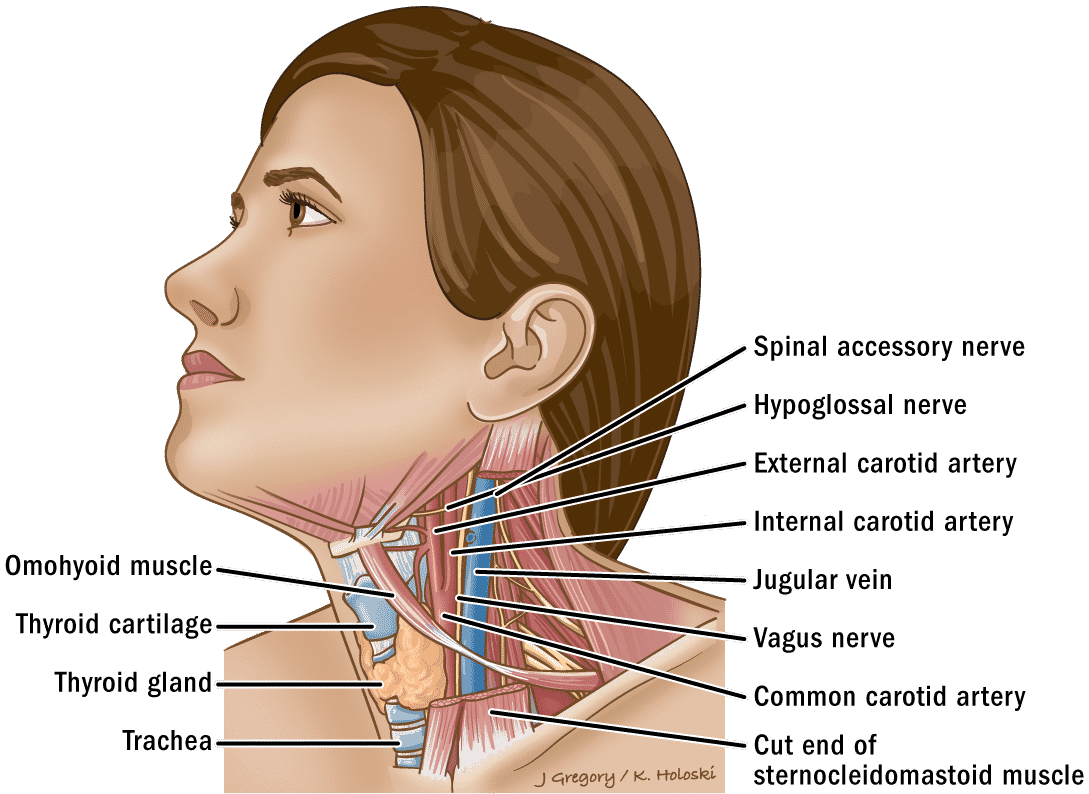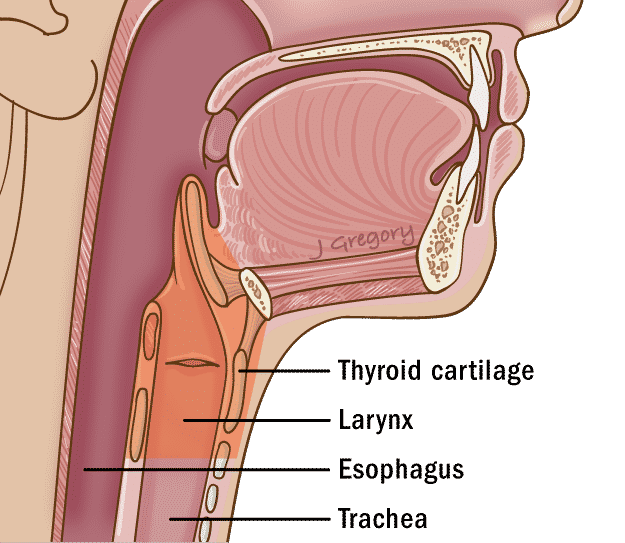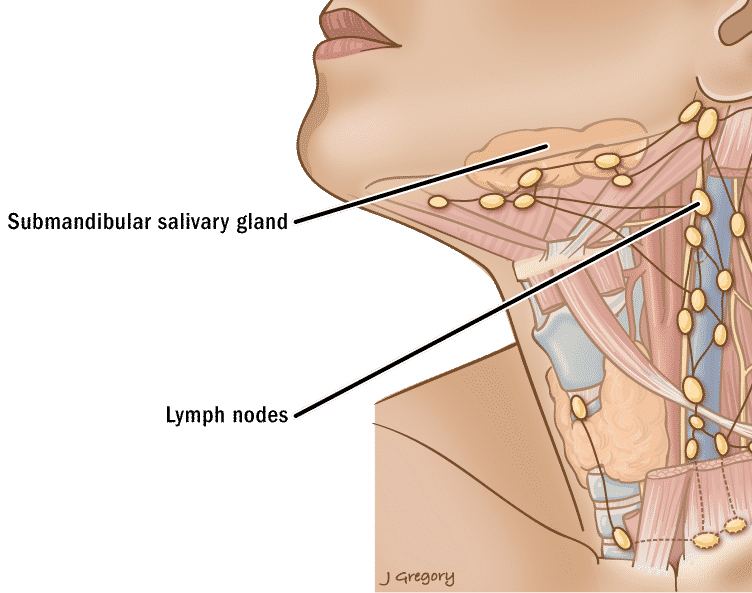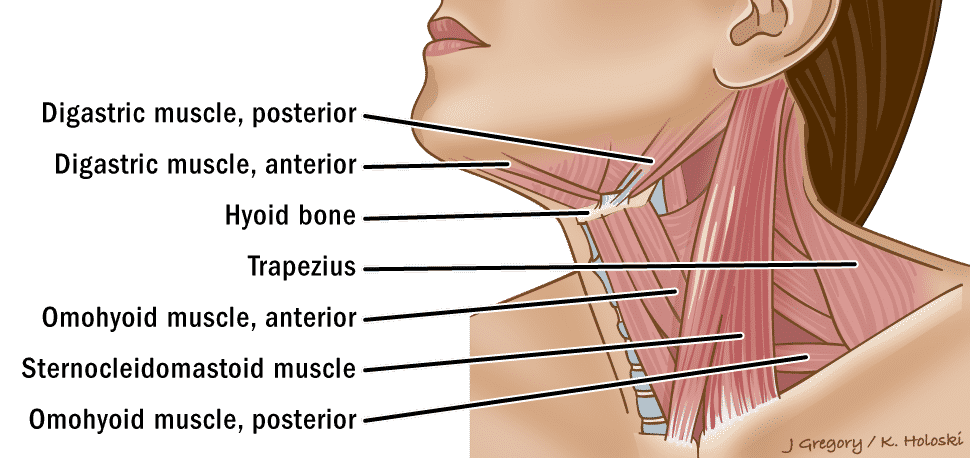Primary Neck Cancers
In order to fully understand primary neck cancers, it helps to understand the anatomy and function of the structures in the neck. The neck is a complex anatomic region between the head and the body.
In the front, the neck extends from the bottom part of the mandible (lower jaw bone) to the bones of the upper chest and shoulders (including the sternum and collar bones). The back of the neck is mostly comprised of muscles, as well as the spine.
The neck is essentially a passageway for air, food, liquids, blood, and more to travel between the head and the rest of the body, through structures such as blood vessels, nerves, and lymph nodes, as well as the larynx, trachea, and esophagus.
Important Structures in the Neck
Sternocleidomastoid Muscle
This is the large muscle on either side of the neck. This muscle covers and protects many important deeper structures such as the carotid artery and the jugular vein. This muscle starts at the skull just behind the ear (mastoid bone) and travels down to the sternum (breastbone) and clavicles (collarbones).
Carotid Sheath
This is an envelope of fascia that envelopes three major structures: the carotid artery, internal jugular vein, and vagus nerve.
Thyroid Gland
The thyroid is located at the midline of the neck, under the skin and a few layers of thin muscles. It sits just in front of and to the side of the upper trachea. It secretes thyroid hormone which is important in regulating many functions of the body. The thyroid gland has a right and left lobe which are connected by an isthmus. Learn more about the thyroid.
Parathyroid Glands
These four glands are located just behind the thyroid gland, two on each side. They are critical in helping to regulate levels of calcium in the blood.
Additional Major Arteries & Nerves
Just behind the carotid sheath sits the sympathetic nerve plexus, which helps with blood pressure control and other important functions. There are also other major nerves such as the hypoglossal nerve (which controls tongue movement), the spinal accessory nerve (which controls neck and shoulder movement), and the phrenic nerve that innervates the diaphragm (which facilitates breathing).


Larynx
The larynx is often called the voice box because it houses the vocal cords and is responsible for producing sound during speech. It is part of the throat and is located in the middle of the neck. The framework of the larynx is formed by the cricoid and thyroid cartilage, as well as, other smaller cartilages. Learn more about the larynx.
Esophagus
The esophagus is the passageway for eating. It is located behind the trachea in the lower neck. Food and liquids travel through this muscular tube which travels from the neck through the chest until it connects to the stomach in the abdomen.
Trachea
The trachea is the passageway for breathing. It begins just below the cricoid cartilage of the larynx and extends into the chest to eventually split into left and right bronchi which continue to divide in the lungs. The trachea is made up of multiple c-shaped cartilage rings and a posterior muscular wall.
Salivary Glands
The submandibular salivary glands and the tail of the parotid salivary gland are located in the upper part of the neck. Learn more about salivary glands.
Lymph Nodes
There are lymph nodes located throughout the body, and several in the neck. Lymph nodes filter fluid in the body and help to fight infections and cancers. Cancers from a site in the head and neck can drain into lymph nodes and lead to the growth of cancer within the lymph node (called a metastatic lymph node). Learn more about lymph nodes.














